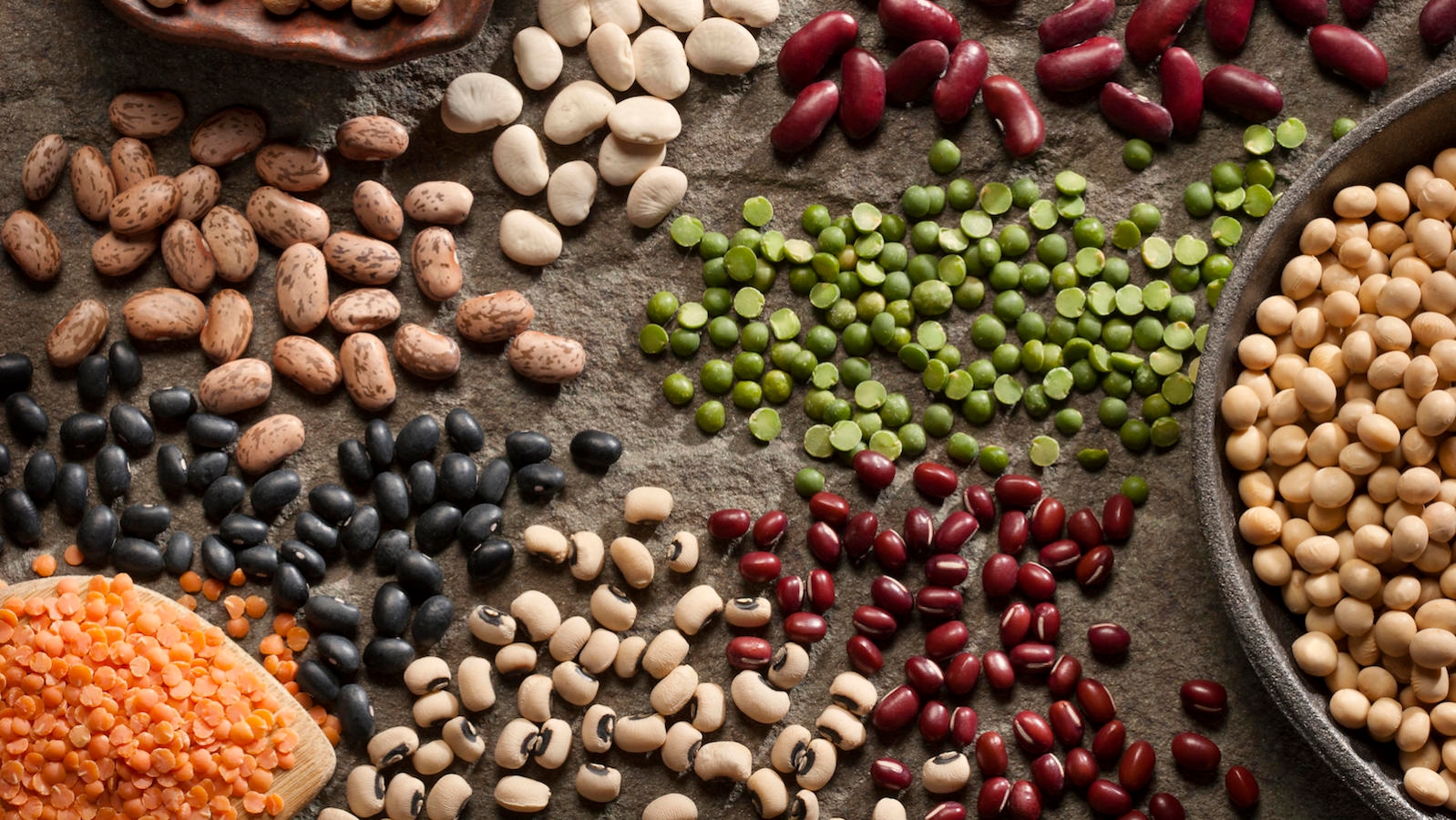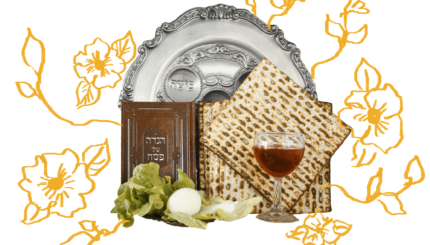There are five grains, and five grains only, that, according to Jewish law, can ferment and become hametz (any food that is leavened or has a leavening agent). These are wheat, barley, spelt (also known as farro), oats, and rye. These are also the only grains that can be made into matzah. Traditional Jewish law forbids eating, owning, or deriving benefit from these five grains in any amount and in any form throughout the holiday (other than when they are baked into matzah).
On its own, this rule requires fairly extensive effort to observe, but it is, at least, quite clear. For the past 700 years, however, Ashkenazic Jews have complicated Passover observance by avoiding rice, millet, and legumes. These are collectively known as kitniyot, from the Hebrew word katan (little). (In recent years, the discovery of the New World food quinoa, which most Jews now consider kosher for Passover, has eased the kitniyot burden somewhat.)
Note: The Conservative movement’s Committee on Jewish Law and Standards ruled in December 2015 that kitniyot now are permitted on Passover.
The Talmudic Discussion of Kitniyot
Although the earliest mention of the custom to prohibit kitniyot dates from the 13th century, the discussion concerning their use goes back to Tannaitic times. The second century Rabbi Johanan ben Nuri considered rice and millet to be close enough to the five grains that one could use them for matzah:
With your help, My Jewish Learning can provide endless opportunities for learning, connection and discovery.
“Our Mishnah [which defines the five grains that can leaven and can therefore be used for matzah] disagrees with R. Johanan b. Nuri, who holds: Rice is a species of grain, and one is punishable for [eating it in] its leavened state. For it was taught: R. Johanan b. Nuri prohibits rice and millet, because it is close to leaven” (Bavli Pesachim 35a).
Here, the Talmud points out that Johanan b. Nuri’s approach disagrees with the Mishnah. A later Talmudic discussion mentions that the amoras (rabbis of the third to sixth centuries) R. Huna and Rava used to put rice on the seder plate, from which behavior, Rav Ashi concludes, “We do not pay attention to the opinion of R. Johanan b. Nuri” (Bavli Pesachim 114b).
Reasons for Prohibiting Kitniyot
During the 13th century, rabbis in France began to refer to a custom of prohibiting kitniyot, including rice, dried beans, millet, and lentils, although most of the reasons explaining (or justifying) the prohibition were developed later. The 13th-century talmudist Rabbenu Peretz b. Elijah of Corbeil suggests that people might get confused because hametz and kitniyot are boiled similarly, and in some places they make kinds of “bread” out of kitniyot. People might wrongly assume that what is permitted for rice or beans might also be permitted for the five grains. In the 14th century, R. Jacob b. Asher, the author of the Arba’ah Turim, suggested that grain might be mixed up with kitniyot during storage.
Reasons for Allowing Kitniyot
On the other hand, the custom has been widely criticized. As the Israeli Masorti (Conservative) Rabbi David Golinkin has shown, not only is the custom contrary to the opinions in the Talmud, but more than 50 different early sages reject it outright. One of the earliest sages to mention the practice, the 13th-century Samuel b. Solomon of Falaise, considered it a “mistaken custom,” and others called it a “superfluous stricture” or even a “stupid custom.”
READ: Rabbis Expand Menu for Passover, But Will Conservative Jews Bite?
Some authorities consider it obligatory to abolish a stupid custom. The 18th-century Rabbi Jacob Emden wrote that he would have abolished the custom had he had the authority to do so. In the 19th century, R. Israel Salanter, the founder of the Musar (ethics) movement in Lithuania, ate kitniyot on Passover in public during a time of scarcity, dramatically demonstrating that kitniyot were not the same as hametz (which he clearly did not permit).
Although scarcity has not been a serious issue in recent times, modern arguments against the custom focus on how it raises the cost of observance, how it detracts from the joy of the holiday, and how it divides the Jewish community, especially in Israel, where there is a significant split between Ashkenazic Jews who observe the custom and Sephardic Jews who do not.
Reasons for Maintaining the Custom
A 700-year-old custom, however, should not be lightly abandoned. Rabbinic sources abound with warnings not to remove the boundaries set by previous generations. Indeed, many customs ultimately develop legal force. While in Israel most “kosher for Passover” products are made for people who eat kitniyot, in North America, it is almost impossible to find kitniyot products that reliably do not have hametz.
Furthermore, since most Jews in North America are Ashkenazic, there is little basis for an argument that maintaining the custom divides the Jewish community. To the contrary, wholesale abandonment of the prohibition on kitniyot might contribute to further divisiveness.
Customary Confusion
Each year, more questions are asked about kitniyot than are asked about hametz, which makes some rabbis concerned that our educational focus has lost its sense of priority. One rabbi reports how a well-meaning but ill-informed congregant “knew” that string beans were a prohibited legume, but planned on making lasagna (with regular wheat pasta) since it’s flat and doesn’t rise. Regular pasta is, of course, outright hametz according to all authorities (though special kosher-for-Passover pasta is sold these days).
While incidents like these argue for a re-evaluation of what is taught, they also indicate that the concerns about popular confusion are quite real. Nevertheless, the widely held and generally correct perception that the rules about kitniyot seem to change from year to year is probably the most significant factor contributing to the confusion.
Kitniyot May Not Leaven, but the Prohibition Expands
In addition to what has already been mentioned, items that have been considered prohibited by some community or other include peas, caraway, fennel seed, mustard, garlic, corn, soybeans, and peanuts. Another way in which the customary prohibition has expanded has been to limit the use of derivatives of kitniyot, including derivatives that could not be confused with grain or flour, like soybean oil and peanut oil.
Potatoes provide an interesting contrasting case. Unlike peas, potatoes do make a flour that is used quite effectively in Pesachdik (Yiddish for “Kosher for Passover) cakes and brownies. Nevertheless, potatoes are not prohibited. Indeed, one of the leading halakhic (Jewish legal) authorities of the 20th century, Rav Moshe Feinstein, has argued that potatoes were initially not prohibited because they simply weren’t known in Europe. Once they became known, they weren’t prohibited because there were early authorities that considered the kitniyot prohibition a “foolish custom.” On this basis, Rav Feinstein permitted peanuts; he also permitted peanut oil with the additional reason that it was a derivative.
According to this line of thinking, items that were traditionally prohibited could continue to be prohibited, but there was no basis for expanding upon the list of prohibited items (Igrot Moshe, Orah Hayyim 3.63).
Over the past decade, peanut oil has become far less available for Passover. Safflower oil, which had also been considered acceptable, is also hard to find. The most commonly available oil now is cottonseed oil. But that oil will also probably disappear from our shelves, since many Israeli rabbinic authorities have declared it unacceptable. Ignoring Rav Feinstein’s reticence to expand the prohibition, most kashrut authorities in North America are quick to adopt new strictures.
Kosher, but Perhaps Educationally “Unacceptable”
On the other hand, some commercially produced foods that use potato starch and/or matzah cake meal to create imitations of regular, hametz foods — such as Pesach noodles, breakfast cereal, and cookies — while technically Pesachdik, might be avoided for precisely the same reason that kitniyot originally were. How is one to teach a child (or an adult) what hametz is if many of the primary forms of hametz in a child’s diet are also available in fairly indistinguishable forms on Passover? Surely, technology will soon yield Pesachdik sliced bread! Foodies will quickly aver that Passover noodles are inferior and will never be confused with the real item, but then, what is the point of buying them in the first place?
Some Final Thoughts
While one is prohibited to own, use, or benefit from hametz, Ashkenazic tradition for kitniyot only applies to consumption. One does not have to sell one’s kitniyot along with one’s hametz. Furthermore, one can continue to use cornstarch-based bath powder. Even medicines that use corn starch as a binder are permitted.
Especially in Israel, where there is a substantial Ashkenazic minority, kitniyot can be a very divisive issue. North America has far fewer Sephardim, but the dual trends of expanding lists of prohibited items and a backlash among liberal Ashkenazim, who are limiting or abandoning their observance of avoiding kitniyot, can lead to serious divisions in the Jewish people. Therefore, people should be aware that someone who does not eat kitniyot may still eat from the dishes of someone who does eat kitniyot. It is appropriate to be strict on Passover; it may not be appropriate to make “little things” into such a big thing that it separates Jew from Jew.
Prep for Passover like a pro with this special email series. Click here to sign up and you’ll receive a series of helpful, informative, and beautiful emails that will help you get the most out of the holiday.
hametz
Pronounced: khah-METZ or KHUH-metz, Origin: Hebrew, bread or any food that has been leavened or contains a leavening agent. Hametz is prohibited on Passover.
kashrut
Pronounced: kahsh-ROOT, Origin: Hebrew, the Jewish dietary laws.
kitniyot
Pronounced: kit-nee-YOTE, Origin: Hebrew, meaning "little things," the term here refers to legumes, corn, rice and other non-hametz foods prohibited for use on Passover by some Ashkenazic rabbis in the medieval period. Many Sephardic Jews (and Conservative Jews) do allow them on Passover.
kosher
Pronounced: KOH-sher, Origin: Hebrew, adhering to kashrut, the traditional Jewish dietary laws.
Mishnah
Pronounced: MISH-nuh, Origin: Hebrew, code of Jewish law compiled in the first centuries of the Common Era. Together with the Gemara, it makes up the Talmud.
Moshe
Pronounced: moe-SHEH, Origin: Hebrew, Moses, whom God chooses to lead the Jews out of Egypt.
Pesach
Pronounced: PAY-sakh, also PEH-sakh. Origin: Hebrew, the holiday of Passover.
seder
Pronounced: SAY-der, Origin: Hebrew, literally "order"; usually used to describe the ceremonial meal and telling of the Passover story on the first two nights of Passover. (In Israel, Jews have a seder only on the first night of Passover.)
Talmud
Pronounced: TALL-mud, Origin: Hebrew, the set of teachings and commentaries on the Torah that form the basis for Jewish law. Comprised of the Mishnah and the Gemara, it contains the opinions of thousands of rabbis from different periods in Jewish history.



